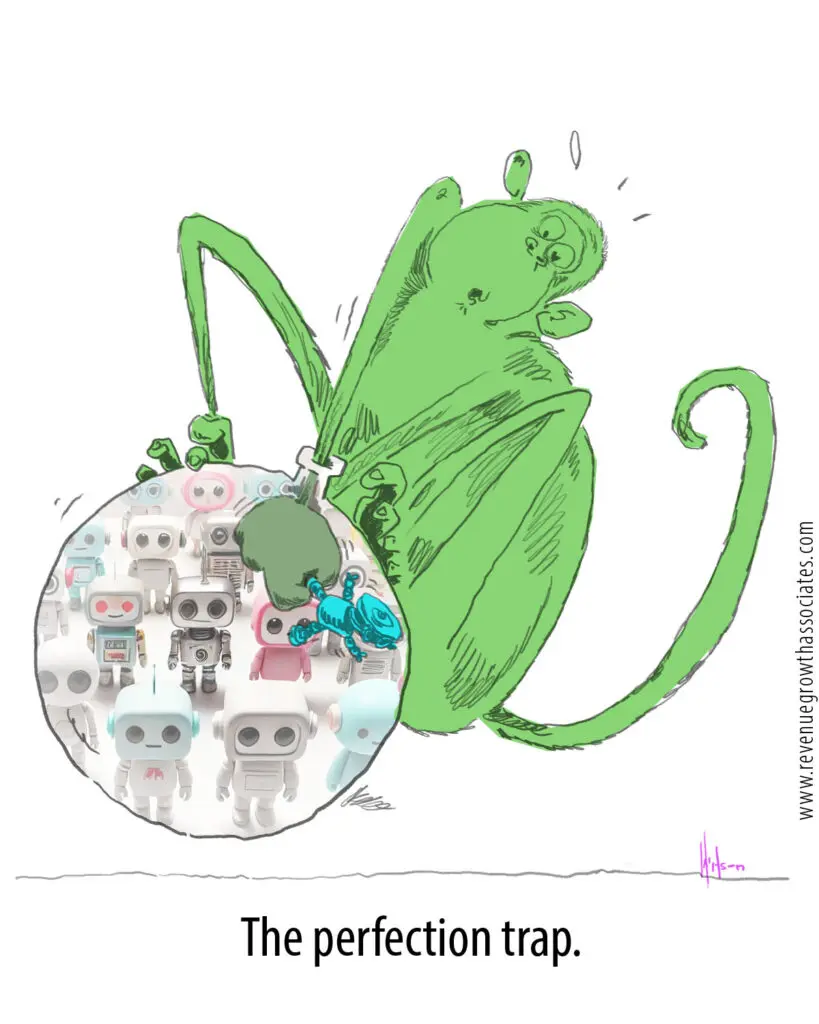In the ongoing pursuit of business excellence, it’s easy to fall into the trap of chasing perfection. But in today’s rapidly changing technological landscape, striving for that final 5-10% improvement in current processes might seem like a worthy goal, yet it often turns out to be an illusion. This is particularly true in sales and go-to-market operations, where the ecosystem is inherently imperfect—largely because it involves humans.
The real question isn’t whether AI can be perfect—because it can’t—but whether AI can be “good enough.” Instead of perfecting what already exists, organizations should focus on embracing the next big wave: AI. While AI won’t be flawless, its potential far exceeds what incremental improvements to current processes could ever achieve.
Why Chasing Perfection Is a Risky Strategy
Many organizations are still focusing on perfecting existing processes, such as refining traditional sales methodologies, enhancing CRM tools, and providing training on established sales techniques. While these initiatives have been effective in the past, their impact is diminishing. Why? Because today’s “perfect” processes are likely to become outdated in the face of new, game-changing technologies like AI, and the new operating models these technologies will enable.
The real threat isn’t that AI will be imperfect—it’s that those who don’t leverage AI effectively will fall behind. In areas like sales and go-to-market, where speed and agility are critical, those who wait for perfection will miss the opportunity to seize the future.
Strategies to Mitigate the Risks of AI Imperfection
While AI may not be perfect, there are some ways to mitigate its risks and harness its power to drive substantial business growth:
1. Human-in-the-Loop (HITL)
- Approach: Ensure that AI systems are overseen by human experts who can intervene, validate, or override decisions made by AI, particularly in high-stakes scenarios.
- Example: In sales, a human can review AI-generated leads or personalized content before they are sent out, ensuring the messaging aligns with brand standards and customer needs.
2. Guardrails and Ethical AI Guidelines
- Approach: Establish guardrails to ensure AI operates within practical boundaries. This includes pre-defined rules that limit AI actions based on regulatory compliance, ethical considerations, and organizational values.
- Example: Ensure AI-driven customer interactions do not make misleading claims or offer discounts that would violate company policies or local laws.
3. AI Ecosystem Redundancies
- Approach: Implement redundancies within the AI ecosystem where multiple AI models or systems cross-validate each other’s outputs.
- Example: In a sales environment, one AI system might recommend product bundles based on purchase history, while another system validates the relevance of these bundles by analyzing real-time customer insights.
4. Continuous Learning and Feedback Loops
- Approach: Build systems that allow AI to learn from both successes and failures continuously. Feedback loops, where the outcomes of AI-driven decisions are fed back into the system, can help improve performance over time.
- Example: If an AI-driven sales strategy leads to lower-than-expected results, the AI system should incorporate that feedback to fine-tune future recommendations, making them more accurate and effective over time.
Moving Beyond Perfection: The Path Forward
AI is not just about achieving perfection; it’s about embracing change and positioning your business for the future. But more than that, AI is about being at the forefront of that change, positioning your business to set the pace for the future. As AI continues to evolve, those who leverage its capabilities to re-imagine and redefine their business models will lead the way. So instead of asking, “Is AI perfect enough?” the real question should be, “Are you ready to use AI to unlock the next level of business success and growth?”


